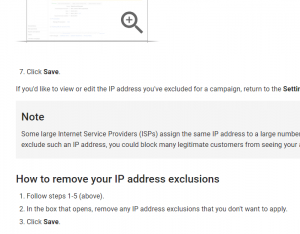by Laurie Sullivan, Staff Writer @lauriesullivan, September 16, 2016
Google warned advertisers in August that a new ranking signal will begin downgrading mobile Web pages next year when “intrusive interstitials” are used. Interstitials interrupt the user experience and force them to take action such as submit an email, watch an ad, or download something.
Typically people just close them, according to Keith Sibson, VP product and marketing at email marketing company PostUp. He referred to boxes and interstitials. The term “lightbox” comes from the fact that most interstitials appear in the center of screen and fade the background of the Web page to dark, analogous to the physical lightboxes used for photographic X-rays.
SearchBlog (SB) asked Sibson how he thinks Google’s change will affect search marketers. Here’s what he had to say.
Search Blog: Now that Google has new rules on how to use interstitials, how should marketers approach the change?
Keith Sibson: Google’s rules are intended to encourage publishers to provide a better experience. Google views search results similar to a referral. They care about quality of experience. If the experience is poor, Google will penalize it in search results. If marketers are not using interstitials on mobile devices, then they have nothing to worry about.
The real issue is the ad, not how the email captures the consumer. Marketers at publishers don’t always have a say in how ads are presented on their properties. It’s often a function of the chief revenue officer, the product manager, and the ad sales team. Auto-play video and full-screen ads are not uncommon, so marketers should get with their product and sales team to make sure that they are aware of the upcoming changes, and adjust the inventory available to advertisers accordingly.
Another option — and this factors into Google’s strategy — is to switch the mobile user experience to Google AMP [Accelerated Mobile Pages project]. Email capture and ads then are constrained by what Google thinks is acceptable for user experience.
SB: How does this affect search marketers?
KS: This will primarily affect publishers that rely on search traffic and with large mobile audiences. Publishers that rely mainly on social traffic, which is more common, will be less affected, but social — and especially Facebook — presents its own set of problems.
They should also explore tools other than lightboxes like sticky footers, teasers, and other techniques that are potentially better for mobile environments, especially in light of these recent changes.
Sticky footers and teasers are low-profile banners that scroll from the top or bottom of the screen and “stick” to the bottom of the screen even while scrolling. While very noticeable, they do not interrupt and prevent users from consuming the content.
SB: How do Lightboxes or interstitials convert audiences into email subscribers?
KS: They proactively ask the person viewing the ad for an invitation to their inbox — something that users would not necessarily offer or seek out of their own. If the user has a good relationship with the brand, they will be receptive to it. Most publishers already have “Subscribe” links or forms on their Web pages, but users tune them out like banner ads, because they are focused on consuming the content.
SB: Can marketers gain the same or better outcome from the change? What can they expect?
KS: Only marketers that use aggressive techniques on mobile will lose, and today this is primary lead-generation businesses and unenlightened publishers and retailers. It’s one of those situations where users and publishers overall will benefit in the long term, but some marketers will be penalized heavily unless they change course.
MediaPost.com: Search Marketing Daily
(67)
Report Post





